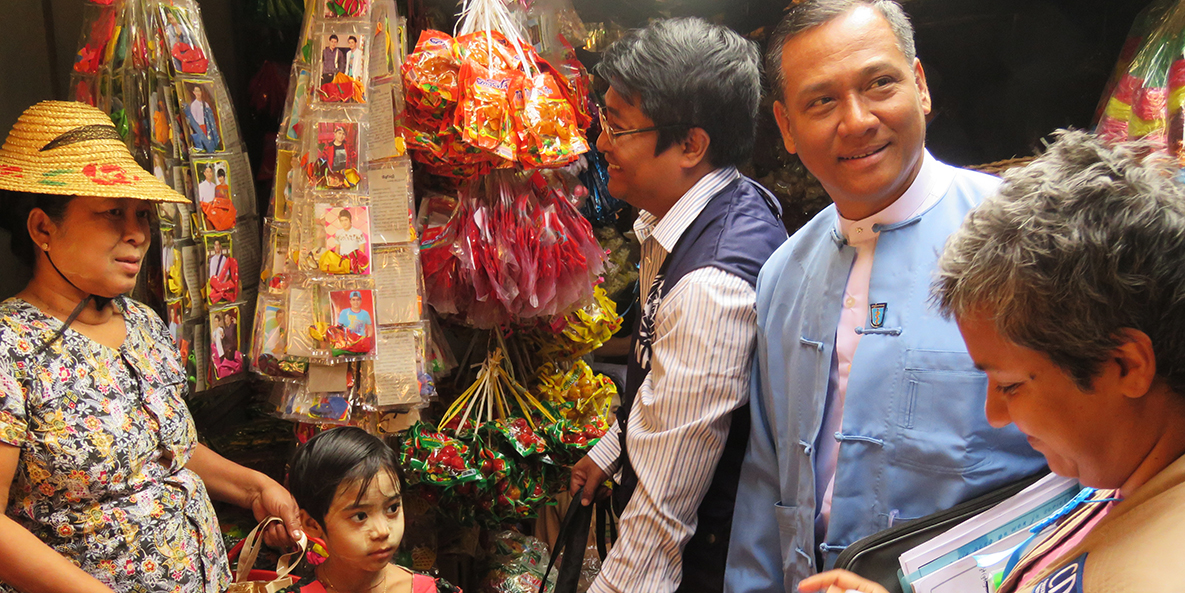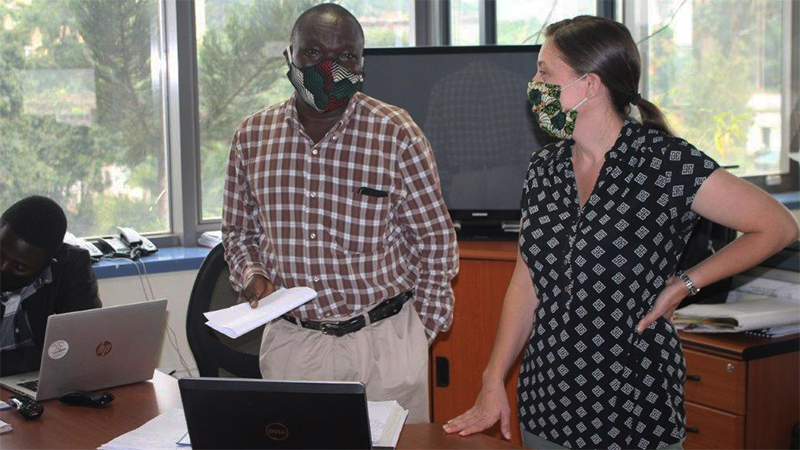CDC’s Center for Global Health Builds Public Health Capacity

Polio campaign in Myanmar (2016).
Credit: Deblina Datta, CDC
The Center for Global Health (CGH) leads program implementation to address the highest burden disease threats in the world. CGH staff and programs work to:
- Eradicate and eliminate diseases, including polio, measles, malaria, and neglected tropical diseases
- End epidemics, including HIV and tuberculosis
- Address emerging infectious diseases
- Accelerate the introduction of lifesaving vaccines
- Strengthen public health systems around the world
- Plan, implement, and evaluate health programs with partner countries’ ministries of health and by working with the Department of State and other U.S. government agencies, including the United States Agency for International Development
CDC country offices serve as a focal point and provide a connection between the wealth of expertise that exists at CDC headquarters and overseas to partners in-country. CDC teams posted overseas assist colleagues across the agency, and provide linkages to ministries of health, U.S. embassies, and other partners. Relationships established through CDC country offices build understanding of the local context and culture. These relationships foster in-country collaborations that address many health challenges.
In coordination with other key programs at CDC, CGH works with countries to strengthen public health systems, train public health personnel to prevent, detect, and respond to disease outbreaks, and implement science-based disease eradication and elimination programs. This practice, known as public health capacity development, is defined as building the knowledge, skills, commitment, structures, systems, and leadership capabilities that enable public health actions to improve health. Public health capacity building is at the core of CGH’s collaborative technical partnerships to implement and sustain science-based public health program interventions and strategies.
Building global health capacities for outbreak preparedness and response is possible. For example, since 2015, CDC has focused on building public health workforce, laboratory, surveillance, and emergency response capabilities in 17 partner countries as part of a U.S. government effort to improve global health security. These investments are showing promising results:
All 17 countries have established or expanded programs to train disease detectives, doubling the number of Field Epidemiology Training Program graduates between 2015-2020.
10 countries now have the capacity to conduct laboratory tests to detect their priority pathogens that cause disease, outbreaks, and deaths.
11 countries can now successfully detect and report antimicrobial-resistant pathogens.
All 17 countries have established public health emergency operations centers staffed by national, CDC-trained personnel.
Public Health Capacity Matters
Public health capacities developed over time become assets that countries can draw from during public health emergencies like the COVID-19 pandemic. Partner country capacity to address COVID-19 has been built on investments made through the President’s Emergency Plan for AIDS Relief (PEPFAR) and global health security, as well as through assistance provided to address emerging infectious diseases and known threats like malaria, tuberculosis, and polio. These programs are also supporting country COVID-19 response activities including contact tracing, community engagement, and coordination of public health response efforts.
For example, CDC has invested in Uganda since 1991, including supporting HIV and malaria control programs and efforts to end tuberculosis, eradicate polio, eliminate measles, prevent other vaccine-preventable diseases like tetanus and rubella, strengthen laboratory testing for infectious diseases, and prepare for other epidemic and pandemic-prone diseases.

Dr. Amy Boore with Milton Makoba Wetake, Emergency Management Laboratory and Logistics specialist, at work at the Public Health Emergency Operations Center in Kampala, Uganda, October 2020.
Credit: Samuel Wasike
These long-term investments and scientific partnerships between CDC and Uganda Ministry of Health partners established the foundation for addressing COVID-19 as soon as the first case was identified in the country in March 2020. Within hours, Uganda’s Field Epidemiology Training Program (FETP) responded to the case.
Strong partnerships and CDC investments in Uganda’s public health system have been critical to the country’s ability to respond early to COVID-19. “Prior U.S. government investments in public health capacity are being utilized as part of Uganda’s COVID-19 response,” said Dr. Amy Boore, CDC Uganda’s Global Health Protection Director.
Dr. Boore adds, “The biggest satisfaction of this year has been seeing what CDC, as an agency, has accomplished over decades of investment here. When we activated for COVID-19 on January 26, 2020, the EOC here was activated for Ebola as well as five other outbreaks simultaneously. Uganda is no stranger to outbreaks, but COVID has been different. It has required full mobilization of all [national] resources and personnel: the lab and sentinel surveillance systems; the infection prevention and control program; the border health program; the EOC and the rapid response teams; the FETP graduates that we called up and put to work in key positions; the investments from PEPFAR, global health security, malaria, flu, and many more CDC programs – all in place and working. It’s what allowed Uganda to stall the transmission of COVID-19 for months after other countries were being heavily impacted, and it’s what is allowing Uganda to continue to sustain a strong and effective response.”
Global Health in Action: In 2013, Uganda was one of two global health security demonstration countries and successfully established a Public Health Emergency Operations Center (EOC) in partnership with CDC. Since being established, the EOC has been used to coordinate 35 responses in Uganda, including mother-to-child transmission of HIV, outbreaks of viral hemorrhagic fevers including Ebola, and now COVID-19. Since being established, Uganda has reduced national outbreak response times from a high of 30 days to less than 48 hours.